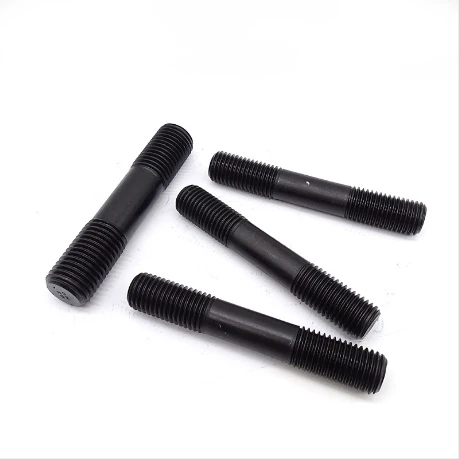

stud bolt types
дек. . 06, 2024 14:44 Back to list
stud bolt types
Understanding Stud Bolt Types A Comprehensive Overview
Stud bolts are essential components in various industries, particularly in construction, manufacturing, and maintenance of equipment. They are integral in providing strong connections between different parts, making them a crucial consideration in any mechanical assembly. This article aims to provide an overview of stud bolt types, their applications, and the factors to consider when selecting the appropriate type for specific needs.
What Is a Stud Bolt?
A stud bolt is a long rod with threads on both ends, typically used in bolted joints where high tensile strength is required. Unlike conventional bolts, stud bolts do not have a head; instead, they are designed to be installed with two nuts. This unique design allows for a more even distribution of load, making them ideal for high-pressure and high-temperature applications.
Types of Stud Bolts
1. Full Thread Stud Bolts These are completely threaded along their entire length, providing a high level of engagement with the nuts. Full-threaded stud bolts are often used in applications where load transfer needs to be maximized, such as in flanged joints and heavy machinery.
2. Partially Threaded Stud Bolts These have a section of the stud that is unthreaded. The unthreaded portion can provide alignment and support when the bolt is installed. Partially threaded stud bolts are commonly utilized in structural applications where alignment is critical.
3. Double End Stud Bolts This type features threads on both ends and is often used in situations where components need to be fastened on both sides. Double end stud bolts are prevalent in pipe flanges and equipment mounting.
4. Tapered Stud Bolts Tapered stud bolts have a gradual reduction in diameter from one end to the other. This design allows for easy insertion into pre-drilled holes and is beneficial in applications where space is limited.
stud bolt types

5. Lift Eye Stud Bolts These bolts have a loop at one end which allows for a lifting mechanism. They are particularly useful in lifting heavy loads during installation and maintenance.
Material Considerations
Stud bolts are made from various materials, each with its unique properties. Common materials include carbon steel, stainless steel, and alloy steel. The choice of material often depends on the application's specific requirements, such as
- Corrosion Resistance In environments exposed to moisture or chemicals, stainless steel is often preferred due to its excellent corrosion resistance. - High Strength Alloy steels are chosen when higher tensile strength is critical, especially in heavy-duty applications. - Cost-Effectiveness Carbon steel offers a budget-friendly solution for standard applications where extreme conditions are not a factor.
Selecting the Right Stud Bolt
When selecting a stud bolt, several factors should be considered
1. Application Requirement Understand the load conditions, pressure, and temperature to determine the appropriate stud bolt type and material. 2. Dimensions Ensure that the length and diameter of the stud bolt fit the project specifications. 3. Coating and Finish Depending on the environment, consider any necessary protective coatings to enhance corrosion resistance.
Conclusion
Stud bolts play a pivotal role in ensuring the integrity and stability of various mechanical assemblies. Understanding the different types of stud bolts and their applications can help engineers and professionals select the most suitable options for their needs. Proper selection not only enhances performance but also contributes to the longevity and safety of the systems being constructed or maintained. Whether it's a full-thread stud bolt for maximum load transfer or a tapered stud bolt for easy installation, knowledge of these elements is crucial for effective engineering solutions.
Latest news
-
Premium Self Tapping Metal Screws: Strong & Easy Install
NewsAug.02,2025
-
Premium Fasteners Manufacturer | AI-Driven Solutions
NewsAug.01,2025
-
Hot Dip Galvanized Bolts - Hebei Longze | High Strength, Corrosion Resistance
NewsAug.01,2025
-
High-Strength Hot Dip Galvanized Bolts - LongZe | Corrosion Resistance, Custom Sizes
NewsAug.01,2025
-
Best Self Tapping Screws for Drywall - Fast & Secure Installation
NewsJul.31,2025
-
High-Strength Hot Dip Galvanized Bolts-Hebei Longze|Corrosion Resistance&Customization
NewsJul.31,2025

